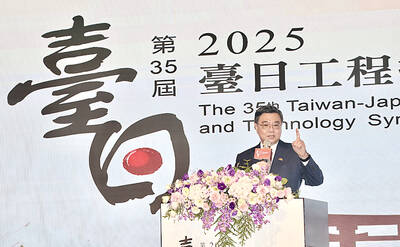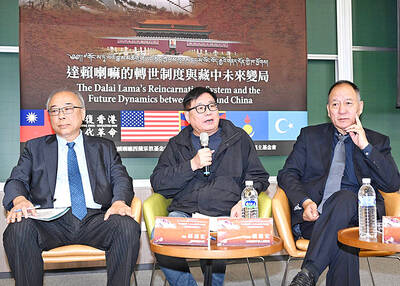Near where the atomic bomb detonated over Hiroshima, the faces of the victims silently appear and fade on a wall of television monitors in a relentless display of the attack's terrifying human toll.
Amid the thousands of faces, one stands apart: that of Corporal John Long, US Army Air Force.
Long, who died in the blast while being held by the Japanese, last month became the first US serviceman to be enshrined at a memorial here, throwing light on the little-known story of US prisoners of war who perished at Hiroshima.

PHOTO: AP
"It shows how indiscriminate the slaughter was," said Shigeru Aratani, a curator at the Hiroshima National Peace Memorial Hall for the Atomic Bomb Victims. "Enemies and friends, soldiers and civilians, women and children -- they were all killed."
Long bailed out of his B-24 bomber as it was shot down near Hiroshima days before the Aug. 6, 1945 bombing.
The 27-year-old steelworker from New Castle, Pennsylvania, was among at least 10 American prisoners of war (POWs) killed in the attack.
The flier's picture provides one of the few hints at Hiroshima's Peace Park of a tale that was unpublicized for decades.
The names of seven US POWs have been added since the 1970s to an official book of victims updated annually by the city, but the list is encased in a stone cenotaph and is not visible to the public.
The US prisoners were absent from the memorial hall, which opened in 2002 and displays photographs of 9,000 bomb victims for 700 visitors a day, until Long's 35-year-old great nephew, Nathan Long, offered the airman's photo last month.
Long says the portrait is a "small story" compared to the catastrophic suffering of Japanese victims. But he said it has big implications for the way Americans remember the bomb.
"I think most Americans would look at all those Japanese faces and say, `That's too bad. A lot of Japanese people died.' But you get one American face and they might feel a little more of a connection," said Long, who grew up in Japan and works in Tokyo as a teacher.
The bombing killed some 140,000 people. Thousands of Koreans brought to Japan as forced labor died, as did Americans of Japanese descent who were trapped after war broke out.
But the POWs are among the least remembered casualties -- their fate wasn't widely known until researchers digging through archives began to document the story in the 1970s.
An important clue came in 1977 when a professor from Hiroshima University found a Japanese list of 20 American POWs listed as killed in the atomic attack.
Some of those names were later found to belong to prisoners who had been killed elsewhere in grisly experiments that the Japanese military apparently wanted to hide.
The others were the crews of three aircraft -- two B-24 bombers, including Long's, and a Helldiver dive bomber -- shot down near Hiroshima on July 28, 1945 after a raid on Japanese warships in nearby Kure.
One of the first US scholars to investigate, Stanford University professor Barton Bernstein, said the US military claimed a fire had destroyed personnel files needed to verify the matter.
But records obtained by resear-chers through the Freedom of Information Act in the 1980s confirmed at least 10 US airmen were listed killed in the blast, Bernstein said.
"We had difficulty prying it out of the Pentagon," he said, adding he suspects the US casualties were not made public after the war to "block any moral doubts" about dropping the bomb.
Thomas Cartwright, the pilot of Long's bomber, said the families of some of the POWs struggled to learn details of their deaths from military authorities who were slow to act on information he provided.
Cartwright, now 80, was saved when he was transferred from Hiroshima to Tokyo for interrogation five days before the atomic blast.
"I think the military would like this to fade away," he said from his home in Moab, Utah.
Cartwright, who has written a book about his experiences titled A Date with the Lonesome Lady: A Hiroshima POW Returns, remembers Long as the "coffee drinker of the crew" -- a likable but serious gunner who spent his money on tools instead of liquor.
Long's sparsely captioned picture at the Hiroshima memorial -- which lists just his name and occupation -- tells visitors very little. But for some his face says everything.
"I wonder if there was any consideration given to them before the attack," said visitor Alice Carol Caldwell, 64, of Starkville, Mississippi, whose eyes welled with tears as she looked at Long's face.
Japanese boys listened quietly as a curator told Long's story.
"He was fighting for his country," said Keiichi Hatanaka, 14. "I'm sure he never imagined he would be killed by his friends."

ALIGNED THINKING: Taiwan and Japan have a mutual interest in trade, culture and engineering, and can work together for stability, Cho Jung-tai said Taiwan and Japan are two like-minded countries willing to work together to form a “safety barrier” in the Indo-Pacific region, Premier Cho Jung-tai (卓榮泰) yesterday said at the opening ceremony of the 35th Taiwan-Japan Modern Engineering and Technology Symposium in Taipei. Taiwan and Japan are close geographically and closer emotionally, he added. Citing the overflowing of a barrier lake in the Mataian River (馬太鞍溪) in September, Cho said the submersible water level sensors given by Japan during the disaster helped Taiwan monitor the lake’s water levels more accurately. Japan also provided a lot of vaccines early in the outbreak of the COVID-19 pandemic,

Kaohsiung Mayor Chen Chi-mai (陳其邁) on Monday announced light shows and themed traffic lights to welcome fans of South Korean pop group Twice to the port city. The group is to play Kaohsiung on Saturday as part of its “This Is For” world tour. It would be the group’s first performance in Taiwan since its debut 10 years ago. The all-female group consists of five South Koreans, three Japanese and Tainan’s Chou Tzu-yu (周子瑜), the first Taiwan-born and raised member of a South Korean girl group. To promote the group’s arrival, the city has been holding a series of events, including a pop-up

TEMPORAL/SPIRITUAL: Beijing’s claim that the next Buddhist leader must come from China is a heavy-handed political maneuver that will fall flat-faced, experts said China’s requirement that the Dalai Lama’s reincarnation to be born in China and approved by Beijing has drawn criticism, with experts at a forum in Taipei yesterday saying that if Beijing were to put forth its own Dalai Lama, the person would not be recognized by the Tibetan Buddhist community. The experts made a remarks at the two-day forum hosted by the Tibet Religious Foundation of His Holiness the Dalai Lama titled: “The Snow Land Forum: Finding Common Ground on Tibet.” China says it has the right to determine the Dalai Lama’s reincarnation, as it claims sovereignty over Tibet since ancient times,

Temperatures in some parts of Taiwan are expected to fall sharply to lows of 15°C later this week as seasonal northeasterly winds strengthen, the Central Weather Administration (CWA) said today. It is to be the strongest cold wave to affect northern Taiwan this autumn, while Chiayi County in the southwest and some parts of central Taiwan are likely to also see lower temperatures due to radiational cooling, which occurs under conditions of clear skies, light winds and dry weather, the CWA said. Across Taiwan, temperatures are to fall gradually this week, dropping to 15°C to 16°C in the early hours of Wednesday